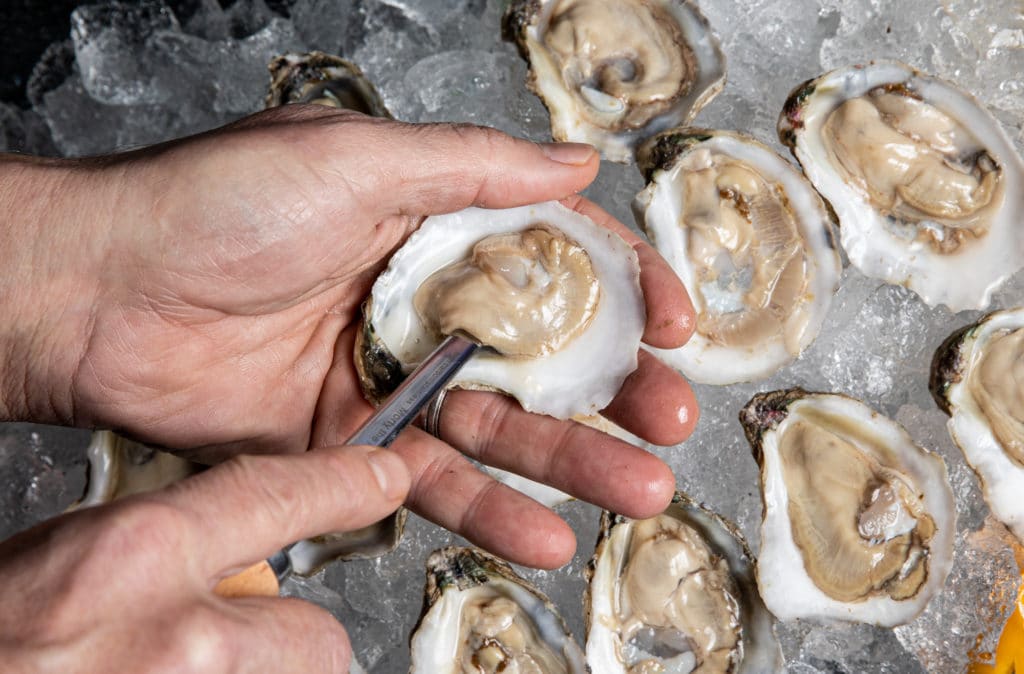Shucking Oysters

Select
Always check for a sell date on raw or containers of shucked oysters to ensure they are fresh. Tags and labels contain specific information about the oysters including the processor’s certification number which indicates that they were harvested and processed in accordance with national shellfish safety controls.
Inspect
Inspect your oysters by throwing away any with cracked or broken shells. Live oysters will close when the shell is tapped. If they don’t close when tapped, do not consume them. We visually check every oyster that leaves our facility and each batch has passed all of our quality controls before it is labeled and shipped.
Store
Store oysters on ice or in the refrigerator. Whole, live oysters should not be stored in water or air-tight containers. If you do not plan to eat them right away, arrange on a tray – flat side up – cover with a damp towel and store in the refrigerator. Keep oysters below 40 degrees at all times.
Shucking
Step One

Clean the oyster by running it under cold running water. It should be closed and have a heavy feel. Place the oyster on a cutting board or kitchen towel. Put on a heavy rubber or mesh glove for safety and hold the oyster cup side down with the hinge toward you. Using a shucking knife, slip the blade between the top and bottom shell right at the hinge.
Step Two

Insert the oyster knife through the hinge, angling the blade and wiggling it into the crease of the hinge giving slight pressure. When you feel the knife sink in, twist it as if you were turning a key until you feel the hinge separate. You should not need to use much force.
Step Three

Using a twisting motion, pry the top and bottom shells apart. Be gentle but firm so as not to lose the oyster liquor inside. Pass the blade across the underside of the top shell and sever the adductor muscle. Remove the top shell and set it aside if you have access to a recycling program. Oyster shell is in high demand and used for growing new oysters.
Step Four

Pass your blade under the oyster to sever the lower adductor muscle. Set the oyster in the lower shell on a bed of crushed ice or serve it on an oyster plate. Enjoy immediately by slurping the oyster from the shell and letting it sit in your mouth (do not swallow). Your salt taste receptor is at the tip of your tongue. Now chew the oyster as much as possible to enjoy the sweet finish.
Nutritional Value
Raw oysters are high in protein and low in fat. With 9% protein and less than 2% fat, a half pound of oysters has only 150 calories.
They are a good source of essential minerals including phosphorus, calcium, potassium and zinc. Three ounces of oysters provide more that one gram of omega-3 fatty acids and are also high in iron content.